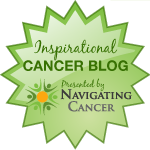I recently saw a Tweet stating that aspartame was safe for Diabetics; talk about misleading information. Aspartame is not safe for anyone and should never have been approved as safe for human consumption. Aspartame is one of the most common artificial sweeteners used today, and yet it has the potential to damage your nervous system—your brain and nerves—leading to a variety of symptoms from migraine headaches to unexplained seizures, dizziness, depression, and vision problems. Aspartame has been found to create MS like symptoms in patients which can result in false diagnosis. It is linked to cancer, obesity, and diabetes.
Aspartame was found to cause various types of primary brain tumors in rats when studies were done in the 1970’s. Even though these studies showed a very clear connection between aspartame and brain cancer, the FDA approved its use as a table-top sweetener in July 1981. Two years later, in July 1983, aspartame was approved for widespread use in diet beverages. One year after that, the number of human brain tumors in the US suddenly increased by 10%! Aspartame is comprised of 10% methanol, 40% aspartic acid, and 50% phenylalanine. Methanol has been proven to cause damage to the optic nerve which can cause blindness, and aspartic acid has been proven to create holes in the brains of mice. Phenylalanine breaks down into DKP, a tumor-causing agent. The creation of DKP in the body is one way aspartame can trigger cancer. Another way is partly related to what happens to aspartame when it exceeds 86 degrees Fahrenheit, as it often does when, for instance, diet drinks are being shipped in hot trucks or stored in hot warehouses. At higher than 86 degrees, the methanol in aspartame converts to formaldehyde and then to formic acid, both of which are potent carcinogens. And according to Dr. Joseph Mercola, aspartame is, by far, the most dangerous substance on the market that is added to foods.
Brain cancer is not the only type of cancer aspartame has been linked to. Leukemia, lymphoma, breast, testicular and endometrial cancer have also been associated with aspartame. Parents may want to be extra diligent about checking the ingredients list of anything sweet (including non-food items) they give their children as aspartame is commonly used to sweeten medicines, antibiotics, vitamins and toothpaste. Given the high rate of brain cancers and leukemias in children these days, it would seem to me that aspartame should be avoided (or banned). I cringe when I read about the ignorant school officials who started the war on sugary sodas in schools only to replace them with diet sodas. Please, have they no common sense? Soda of any type does not belong in school, and as bad as sugar is, artificial sweeteners are worse. However, before someone suggests they go back to sugar soda, keep in mind that one teaspoon of sugar can devastate the immune system for up to six hours, leaving you vulnerable to attack from viruses, bacteria, cancer cells and parasites.
As to aspartame being safe for diabetics? Some would have you believe that anything without calories is safe for diabetics. However, according to Dr. David Brownstein, “Aspartame is particularly toxic for diabetics because it disrupts the body’s normal response to glucose, which is to cause the pancreas to release insulin. The main symptom of diabetes is high blood sugar due to the body's inadequate production or utilization of insulin. Therefore, aspartame is doing exactly the opposite of what diabetics need.” Dr. Brownstein goes on to say, “Unfortunately, even the American Diabetic Association has fallen for this propaganda, and has accepted the idea that aspartame is a suitable sugar substitute for diabetics.”
Aspartame is not safe for diabetics or anyone else. All sources of aspartame sweetener need to be avoided; try pure stevia as a replacement.
Elyn Jacobs
********************************************************************
Elyn Jacobs is President of Elyn Jacobs Consulting, Inc. and a breast cancer survivor. She helps women diagnosed with cancer to navigate the process of treatment and care, and she educates about how to prevent recurrence and new cancers. She is passionate about helping others get past their cancer and into a cancer-free life.
Read more:

















